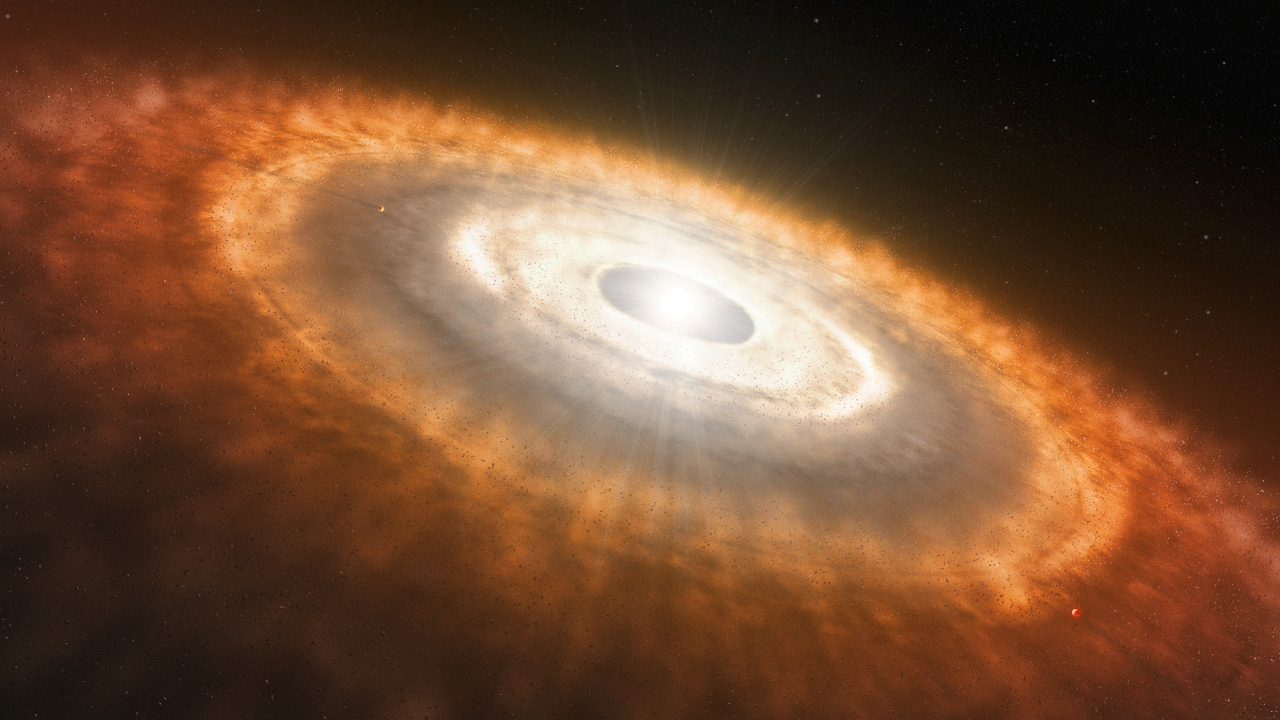Rocky planets can form in harsher environments than previously thought, reveals new Webb study

Astronomers using NASA's James Webb Space Telescope (JWST) have observed for the first time water and other molecules in the highly irradiated inner, rocky-planet-forming regions of a disk in one of the most extreme environments in our galaxy, suggesting that the conditions for terrestrial planet formation can occur in a possible broader range of environments than previously thought.
These are the initial findings from the XUE (eXtreme Ultraviolet Environments) James Webb Space Telescope program dedicated to studying planet-forming disks in massive star-forming regions. The program targets a total of 15 disks in three areas of the Lobster Nebula, a large emission nebula roughly 5,500 light-years away from Earth in the constellation Scorpius. The Lobster Nebula, also known as NGC 6357, one of the youngest and closest massive star-formation complexes, and is home to some of the most massive stars in our galaxy.
"Webb is the only telescope with the spatial resolution and sensitivity to study planet-forming disks in massive star-forming regions," said team lead María Claudia Ramírez-Tannus of the Max Planck Institute for Astronomy in Germany.
Astronomers are using the Medium Resolution Spectrometer on Webb's Mid-Infrared Instrument (MIRI) to observe the rocky-planet-forming regions of disks in the Lobster Nebula and identify their physical properties and chemical composition. The first outcome of this study is centred on the protoplanetary disk known as XUE 1, which is situated in the star cluster Pismis 24.
XUE 1's proximity to multiple massive stars in NGC 6357 suggests that it has been constantly exposed to high levels of ultraviolet radiation throughout its life. Despite this challenging environment, scientists successfully identified a variety of molecules that serve as the building blocks for the formation of rocky planets.
The researchers found that the conditions in the inner disk are similar to those found in the well-studied disks located in nearby star-forming regions, where only low-mass stars form. This further indicates that rocky planets can form in a much broader range of environmental settings than previously thought.
"XUE 1 shows us that the conditions to form rocky planets are there, so the next step is to check how common that is. We will observe other disks in the same region to determine the frequency with which these conditions can be observed," said Ramírez-Tannus.
- READ MORE ON:
- rocky planets
- extraterrestrial life
- planets
- Webb










